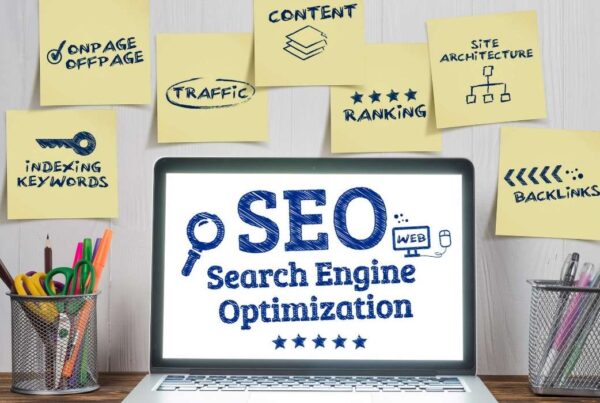In today’s digital landscape, having a visually appealing website is just one piece of the puzzle.
With millions of websites competing for attention, it’s crucial to ensure that your site is not only aesthetically pleasing but also optimized for search engines.
This is where SEO-friendly web design comes into play.
By implementing the right strategies, you can improve your website’s visibility and ranking on search engine results pages (SERPs), ultimately driving more organic traffic to your site.
In this article, we’ll explore some key strategies for creating an SEO-friendly web design that can help your site climb the ranks and attract more visitors.
Mobile Responsiveness:
With the majority of internet users accessing the web through mobile devices, having a mobile-responsive website is no longer optional—it’s essential.
Search engines like Google prioritize mobile-friendly websites in their rankings, so ensuring that your site is optimized for mobile devices is crucial for SEO success.
Responsive design allows your website to adapt seamlessly to different screen sizes and resolutions, providing a consistent user experience across all devices.
Fast Page Loading Speed:
Page loading speed is another critical factor that can impact your website’s search engine ranking.
Slow-loading pages not only frustrate users but also discourage them from staying on your site, leading to higher bounce rates.
To improve page loading speed, optimize images, minify CSS and JavaScript files, leverage browser caching, and consider using a content delivery network (CDN) to deliver content more efficiently.
Clean and Semantic HTML Markup:
Clean and semantic HTML markup not only enhances the accessibility and usability of your website but also makes it easier for search engine crawlers to index and understand your content.
Use proper HTML tags (e.g., <h1> for headings, <p> for paragraphs) to structure your content logically and avoid excessive nested elements or unnecessary code bloat.
Keyword Optimization:

Keyword optimization remains a fundamental aspect of SEO and is equally essential for web design.
Conduct keyword research to identify relevant keywords and phrases related to your business or industry and strategically incorporate them into your website’s content, headings, meta tags, and URLs.
However, avoid keyword stuffing, as this can negatively impact your site’s ranking.
User-Friendly Navigation:
A well-designed navigation system not only improves the user experience but also helps search engines understand the structure and hierarchy of your website.
Use clear and descriptive navigation labels, organize your content into logical categories and subcategories, and include a sitemap to assist both users and search engine crawlers in navigating your site efficiently.
High-Quality Content:
Content is king in the world of SEO, and providing valuable, relevant, and engaging content is essential for attracting and retaining visitors.
Create informative and authoritative content that addresses the needs and interests of your target audience, and regularly update your website with fresh content to keep it relevant and engaging.
Incorporate multimedia elements such as images, videos, and infographics to enhance the user experience and encourage sharing and engagement.
Schema Markup:
Schema markup is a form of structured data that helps search engines understand the context and meaning of your content.
By implementing schema markup, you can enhance your website’s visibility in search results and earn rich snippets, which can improve click-through rates.
Include schema markup for critical elements such as business information, reviews, events, and products to provide search engines with additional context about your content.
Optimized URLs and Metadata:
Optimize your website’s URLs and metadata (e.g., title tags, meta descriptions) to make them more descriptive, concise, and keyword-rich.
Use relevant keywords in your URLs and meta tags to improve your chances of ranking for relevant search queries, but ensure that they accurately reflect the content of the respective page.
Optimized Images:
Images are an integral part of web design, but if not optimized correctly, they can also impact your site’s SEO performance.
To ensure that your images contribute positively to your website’s SEO, use descriptive file names and alt attributes that accurately describe the image content.
Additionally, compress images to reduce file sizes without compromising quality, which can help improve page loading speed.
Internal Linking:
Internal linking plays a crucial role in SEO by establishing a hierarchy of importance and relevance within your website’s content.
By strategically linking related pages and content within your site, you can help search engines discover and index new pages, distribute link equity throughout your site, and improve the overall user experience.
Aim to include relevant internal links within your content wherever appropriate, using descriptive anchor text to provide context.
Secure HTTPS Protocol:
Security is a top priority for search engines, and websites that use the HTTPS protocol are given preference in search rankings over non-secure sites.
Implementing HTTPS not only protects user data and enhances trust but also signals to search engines that your website is secure and trustworthy.
Obtain an SSL certificate for your website to encrypt data transmitted between your server and users’ browsers, thereby securing sensitive information and improving your site’s SEO performance.
Regular Monitoring and Optimization:
SEO is an ongoing process that requires continuous monitoring, analysis, and optimization to maintain and improve your website’s search engine performance.
Regularly monitor key performance metrics such as organic traffic, keyword rankings, and user engagement.
Use tools like Google Analytics and Google Search Console to gain insights into your site’s performance.
Identify areas for improvement, such as pages with high bounce rates or low conversion rates, and make data-driven optimizations to enhance your website’s SEO effectiveness over time.
Social Media Integration:
While social media signals may not directly impact your website’s search engine ranking, they can indirectly influence SEO by driving traffic, increasing brand visibility, and generating backlinks.
Integrate social media sharing buttons into your website to encourage visitors to share your content across their social networks.
Actively engage with your audience on social media platforms to foster relationships and attract new followers.
Additionally, consider incorporating social media feeds or widgets into your website to showcase your social media presence and encourage user interaction.
Local SEO Optimization:
If your business serves a local audience, optimizing your website for local search is essential for attracting nearby customers.
Ensure that your business name, address, and phone number (NAP) are consistent and prominently displayed on your website, and create a dedicated “Contact” or “Locations” page with a Google Maps embed to help users find your physical location.
Additionally, claim and optimize your Google My Business listing, solicit positive reviews from satisfied customers, and participate in local directories and citation sources to improve your visibility in local search results.
Conclusion
In conclusion, designing an SEO-friendly website requires a holistic approach that considers both technical and content-related aspects of optimization.
By implementing the strategies outlined above, you can create a website that not only ranks higher on search engines but also provides a seamless user experience, attracts more organic traffic, and ultimately helps you achieve your business goals.
Keep abreast of evolving SEO trends and best practices, and be prepared to adapt your strategy accordingly to stay ahead of the competition in the ever-changing digital landscape.
Ready to elevate your website’s SEO and drive more traffic?
Contact us at TopLine Media Group to discuss your SEO needs and take your online presence to the next level.
FAQs
Why is mobile responsiveness important for SEO?
Mobile responsiveness is crucial for SEO because search engines like Google prioritize mobile-friendly websites in their rankings. With the majority of internet users accessing the web through mobile devices, having a mobile-responsive website ensures a seamless user experience across different devices, ultimately improving your site’s visibility and ranking on search engine results pages (SERPs).
How can I improve page loading speed for better SEO performance?
To improve page loading speed, you can optimize images, minify CSS and JavaScript files, leverage browser caching, and consider using a content delivery network (CDN) to deliver content more efficiently. Faster-loading pages not only enhance user experience but also contribute to lower bounce rates and higher search engine rankings.
Why is clean and semantic HTML markup important for SEO?
Clean and semantic HTML markup enhances your website’s accessibility, usability, and indexability by making it easier for search engine crawlers to understand your content. By using proper HTML tags and avoiding unnecessary code bloat, you can improve your website’s chances of ranking higher in search engine results.
How should I approach keyword optimization for SEO-friendly web design?
Keyword optimization involves conducting research to identify relevant keywords and strategically incorporating them into your website’s content, headings, meta tags, and URLs. However, it’s essential to avoid keyword stuffing, as this can negatively impact your site’s ranking. Focus on providing valuable content that naturally incorporates relevant keywords.
What are some best practices for user-friendly navigation in web design?
A well-designed navigation system improves the user experience and helps search engines understand your website’s structure. Use clear and descriptive navigation labels, organize your content logically, and include a sitemap to assist both users and search engine crawlers in navigating your site efficiently.
How can I create high-quality content for better SEO performance?
High-quality content is essential for attracting and retaining visitors to your website. Focus on creating informative, authoritative content that addresses the needs and interests of your target audience. Regularly update your website with fresh content and incorporate multimedia elements such as images, videos, and infographics to enhance the user experience.




